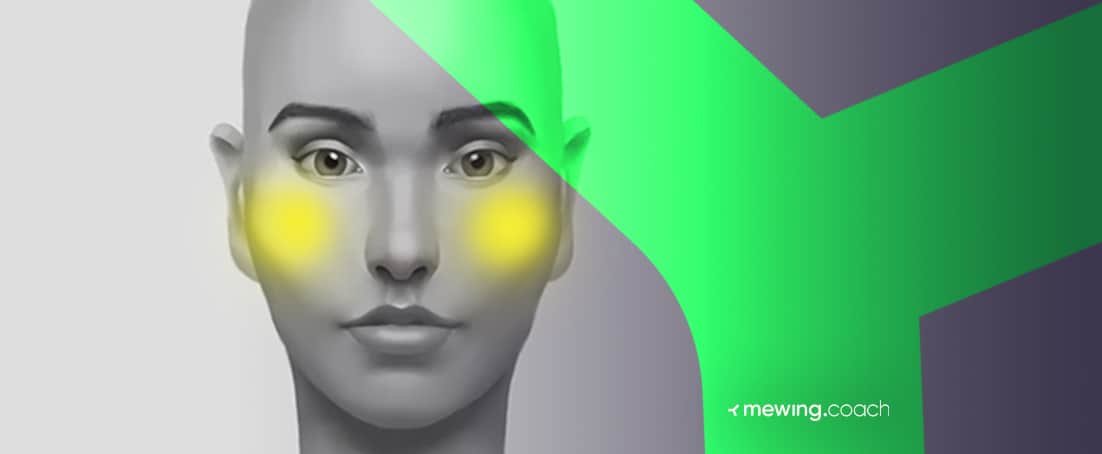
If you’re asking yourself, “Why are my cheekbones so big?” we may have the answer. The skin, bones, and subcutaneous fatty tissue lose volume as we age. Due to volume loss around the cheeks, the cheekbones could appear big. But there are also a few other reasons your cheekbones could look big.
On the other hand, facial exercises can help you improve your cheekbones and achieve the looks you’ve always wanted. If you’d like to learn more about how face workouts can improve your cheeks, start with a quiz below!
In this article, you’ll read about the following:
- 🧾 The reasons your cheekbones are getting bigger.
- 🔎 How to reduce big cheekbones.
- 📚 How to locate your cheekbones.
We’ll also cover more about the various benefits of the mewing technique for reducing chubby cheeks. Let’s dive in!
Can Your Cheekbones Grow?
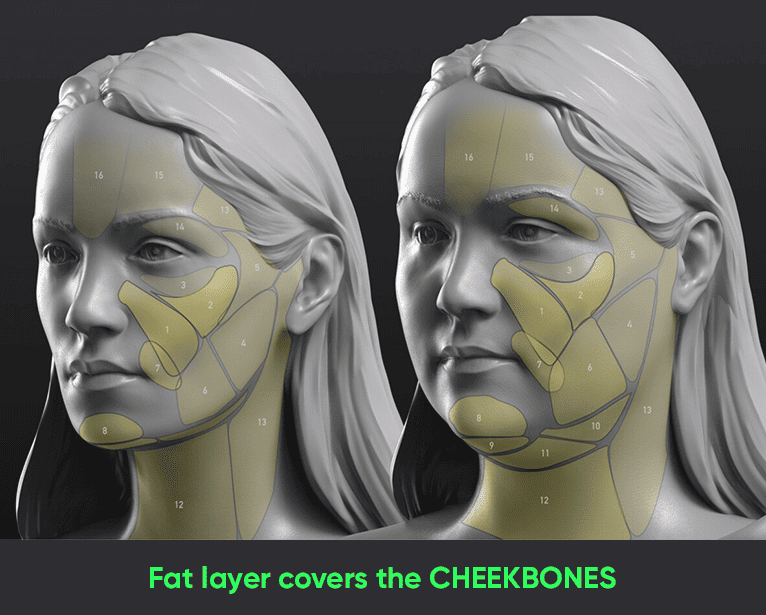
Basically, cheekbones don’t change with adults – it’s soft tissue, muscles, and skin that may change. This means that cheekbones do not grow. Instead, a fat layer covers the cheekbones and the whole face.
Here is Why Your Cheekbones are Getting Bigger
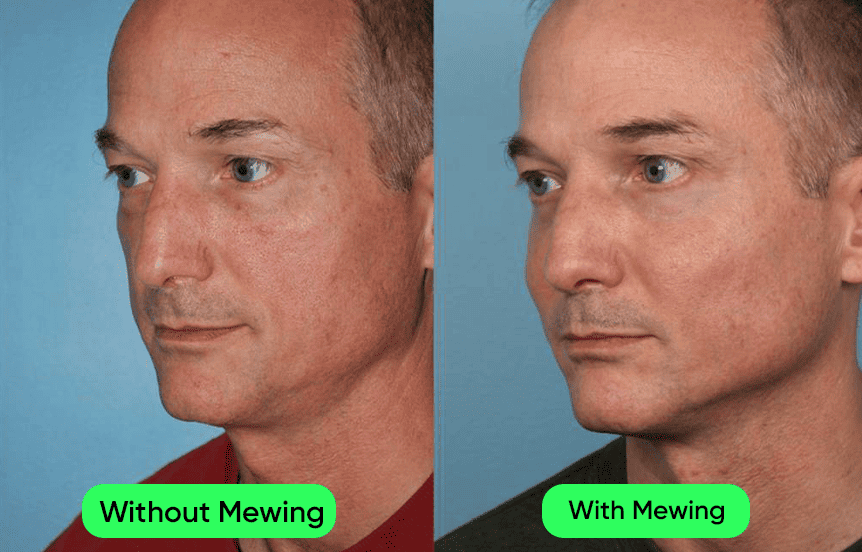
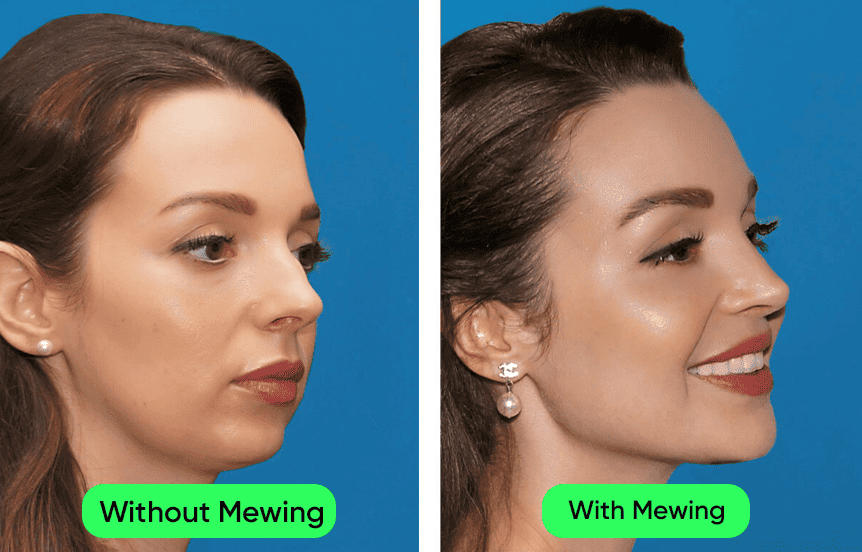
If the reflection in the mirror is prominent cheekbones, you likely have an extra weight overall. But as we said, there are other reasons your cheekbones might be bigger.
Aging
As we age, the thickening of the facial bones will change our appearance. Also, soft tissue changes with age, and it may make an appearance that your cheeks become bigger.
Gained Weight
Gaining weight in your face is typically a symptom of overall weight gain. It will cause your face to look chubby. So, your oval face can be caused by extra fat deposits accumulating around the face’s sides.
The bone structure and facial muscles may also contribute to a moon face (a full and round face) or chubby jowls. Also, overdeveloped masseter muscles between your cheekbones and jaw can make a face look fuller.
Weight Loss
Losing weight can also alter the facial shape. When people lose fat, the cheekbones become more visible. So, weight loss draws attention to your cheekbones, making them appear more prominent than all other facial features.
Water Retention
You may have bigger cheekbones because your body retains too much water. Fluid retention can occur for various reasons, one of which is dehydration. They store extra water when the body feels that there aren’t enough fluids. That excess fluid may travel to various parts of our bodies, such as the face.
You should also know that foods high in sodium usually cause fluid retention, making your face swell and appear much chubbier and rounder than it is. So, limit your intake of salty and fatty foods.
Genetics
The number of fat cells in each body part is determined by genetics. For example, you may have a chubby face because one of your parents has the same feature. The facial bone structure also influences your overall appearance.
Grinding the Teeth
More prominent cheekbones might be caused by your unconscious habit of grinding your teeth. The muscles surrounding the jaw become more apparent as a result, making your face appear sharper. So, try to limit the teeth grinding whenever possible.
How to Locate Your Cheekbones
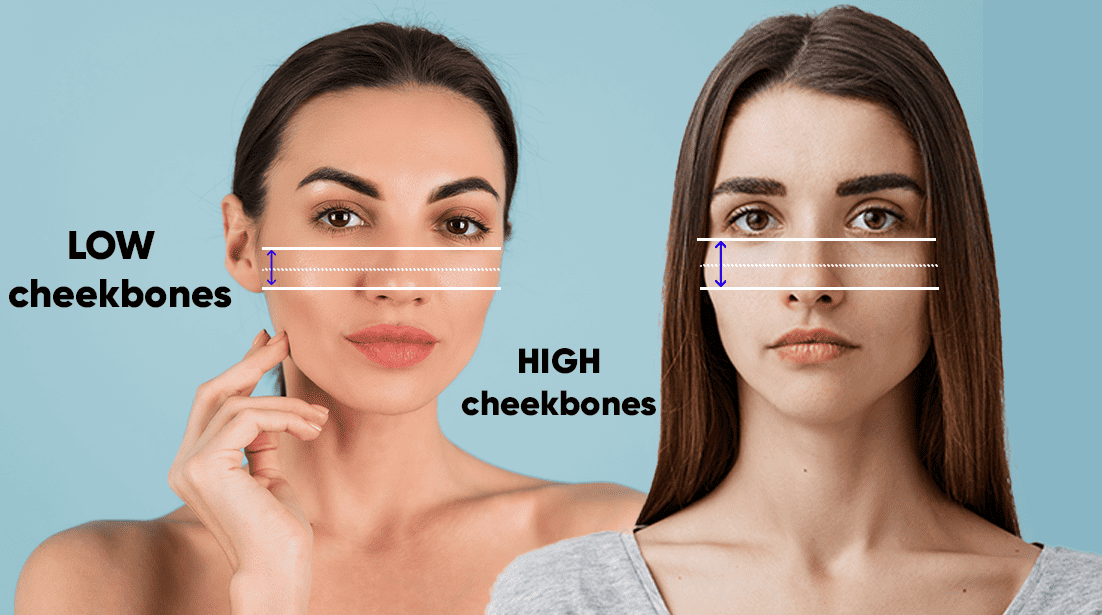
You can have high or low cheekbones. The cheekbones, especially the malar bones, are the structure beneath our skin. High cheekbones are defined as having malar bones near the eyes. Low cheekbones are malar bones close to the nose.
You can quickly determine the location of the cheekbones. You only need a mirror and good lighting. Put the thumbs on the tragus, the “nub” area of cartilage over the ear canals. It’s helpful if your face is clean, without any makeup. Then, with the index finger, press your nostrils together. Draw the index finger and thumb slowly across the face until they touch.
To complement your cheekbone structure, learn effective methods to get rid of puffy cheeks.
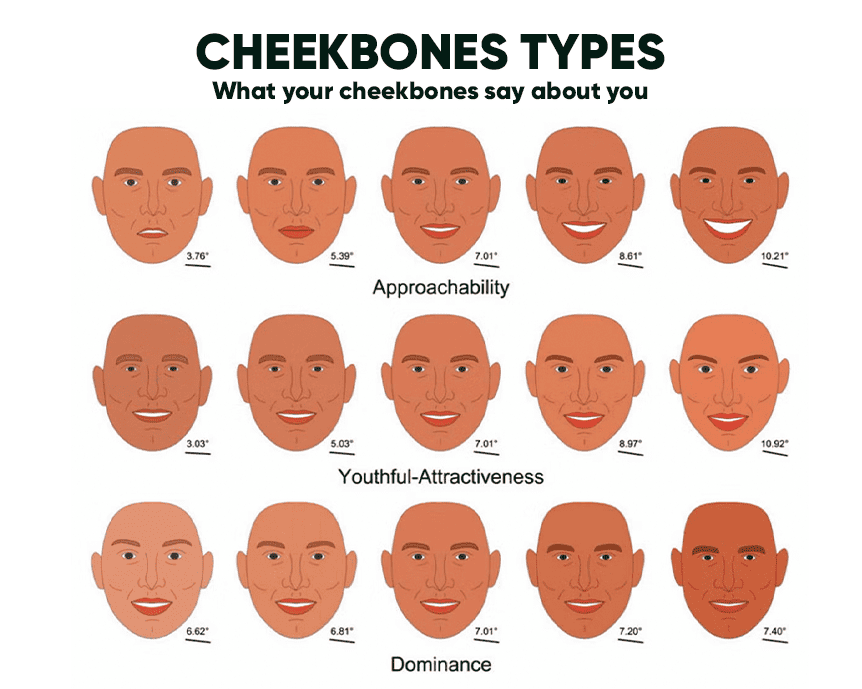
Now, let’s make a high and low cheekbones comparison. You have low cheekbones if they are at the bottom of the nose. You have high cheekbones if it is directly beneath the eyes, nearly to the area where the nose bridge starts.
There is also a simple technique for identifying your cheekbones when applying makeup. First, draw a line from the mouth corner to the earlobe with a brush. This is the beginning of the cheekbone. Now take the brush to your tragus, the fleshy area above the earlobe, which is the end. You should apply bronzer to the hollows of the cheekbones.
Genetic background and ethnic history significantly impact how our faces are structured. But some cultures consider specific facial characteristics, like high cheekbones, to be indicators of attractiveness. If you want to learn why high cheeks are considered to be attractive, you can check out our other posts.
Reducing the Big Cheekbones
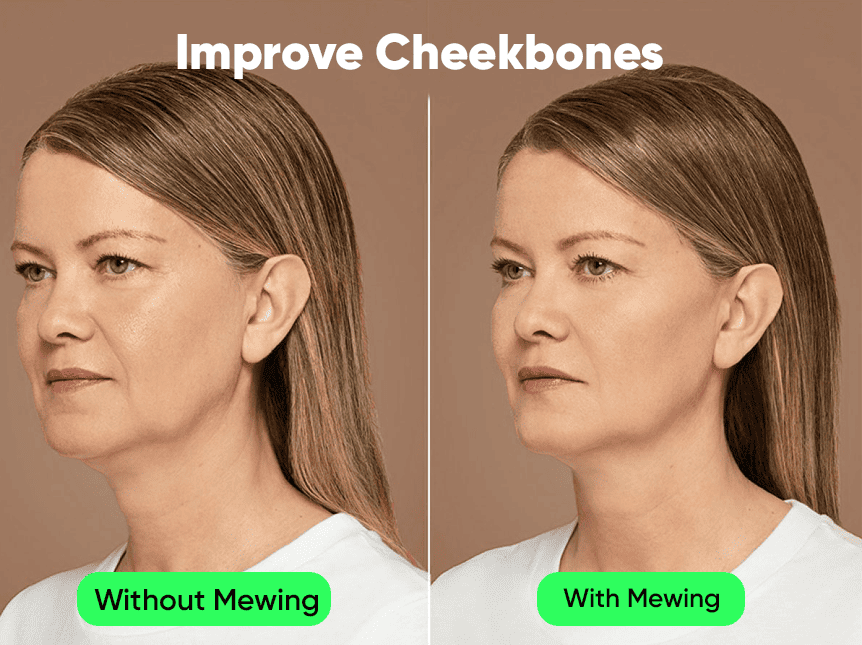
Besides hormones and genetics contributing to a chubby face and chubby cheeks, there are plenty of natural and surgical ways to do that, and we will explain the ones that are most used today.
The following methods are proven to change facial appearance as they will enable you to modify your facial muscles, regulate circulation in your facial area, help your skin look healthier and tighter, etc.
Start Mewing
Mewing is a non-surgical method that can reshape the jawline and correct posture. Besides exercises for your jawline and posture, this method involves activities that can reshape the whole facial muscle construction, including the area around the cheekbones. So, you can lose face fat and change the cheekbones and facial structure.
Mewing can improve your cheekbones and facial structure, but you need to be patient – the results don’t come overnight. For learning more mewing exercises, you can download our free Mewing.Coach app.
Plastic Surgery
Plastic surgery is one of the most effective ways to reduce the bones of the cheeks. However, we recommend consulting a board-certified plastic surgeon to evaluate whether you’ll benefit from the surgery.
The most common type is cheekbone reduction or buccal fat removal. This is a plastic surgery that removes the fat in the cheekbone area. Removing the fat will highlight the face’s bone structure, particularly the cheekbones and the area between the jawline and cheeks.
The buccal fat pads are a rounded fat mass in the middle of your cheeks. They are between the facial muscles in the hollow area under the cheekbones. Their size influences the shape of your face. Plastic surgeons remove the buccal fat pads in the cheeks during the surgery, making your cheeks thinner and the facial angles more defined.
Additionally, it’s also possible to do buccal fat exercises to help tone and sculpt the cheeks.
Make Lifestyle Changes
The secret trick of losing face fat is as simple and annoying as losing weight anywhere else: improved diet and exercise. So, try to eat healthily and incorporate some full-body exercises. And if you have fat cheeks, you probably struggle with a double chin, too, so you can check out our how-to guide on tightening the skin that is under your chin.
However, remember that facial exercises like mewing, jaw flex, and other facial yoga exercises can also help. So it’s highly suggested to mix both types of exercises. A losing the cheek fat tutorial can also be helpful in the process.
What Ethnicity is Prone to Having Big Cheekbones?
People of Asian ancestry tend to have big cheekbones. They have shorter and broader faces with higher, prominent cheekbones.
Which Face Shape Has the Biggest Cheekbones?
Diamond face shape, the rarest of all shapes, has the biggest cheekbones. This type of face has a small chin, a narrow forehead, and wide cheekbones. The cheekbones are the broadest facial part, high on the face, and often dramatic. Diamond-shaped faces also have narrower eyes and jawlines.
Wrapping Up
As you can see, there are several reasons why cheekbones can appear more prominent. Body weight, poor diet, aging, and genetics can contribute to a puffy face. Some people don’t mind facial fat and accept light flaws as part of their unique appearance.
However, many natural and surgical ways can help you eliminate facial fat and get a more youthful appearance if you want to fix your cheek area. One simple way is mewing. Download our Mewing.Coach app to support your change. Mewing can help you reshape the area around the cheekbone. It is also a great activity that can help restore your cheek muscles to normal even after surgery.




